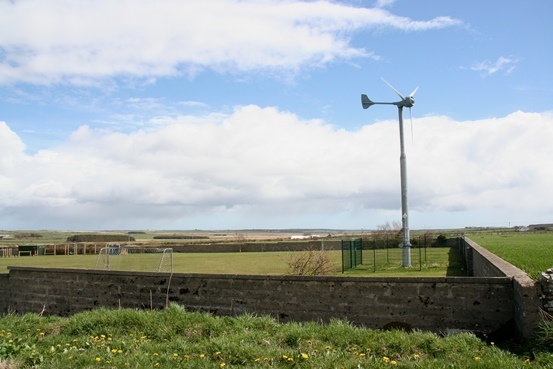Fresh calls have been made to remove wind turbines from Highland school playgrounds after a wind turbine similar to ones installed at schools crashed to the ground for a second time.
The 49ft high turbine at Rhue Stoer Hall, north of Lochinver, snapped in two following a recent storm.
Campaigners fear that it is only a matter of time before a child is hit by falling parts of turbines at a school.
They also claim that Highland Council has failed to act on a report which recommended safety zones around school turbines should be marked with fences.
Brenda Herrick, an anti windfarm campaigner from Castletown who has been fighting school turbines since 2011, said: “Putting these turbines at community centres is not quite as bad as putting them at schools as children cannot choose to avoid them. They have to play round them and it beggars belief that the council have ignored their own guidelines about exclusion zones.
“I just have a vision of these parts flying off in to a crowd of children. There have been so many instances of parts coming off around the UK and in Scotland but fortunately none have hit anyone.”
She also claims that there is a general ignorance about the number and frequency of such incidents as the evidence can be concealed before people find out about it.
A spokeswoman for Highland Council said: “The council’s Health and Safety team is looking at the implications of this failure for the council’s own turbines. Our understanding is that the model which failed at Rhue Stoer is not the same as the one which is installed at the nearby school.”
In the past a turbine failed at Raasay School in 2009, where children were sent home after one of the blades was found embedded in the ground.
Risk assessments in mid 2012 were carried out at all 16 turbines at Highland schools after fears were sparked again by the first crash of the 6KW Rhue Stoer turbine on Hogmanay 2011. At this time, one of the turbine blades broke and flew 60 yards through the air.
The order to switch school turbines back on came in November 2012 after consultants concluded that the turbines were safe in winds of up to 134mph.
